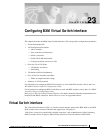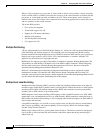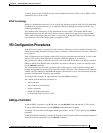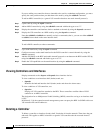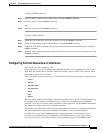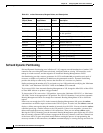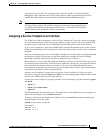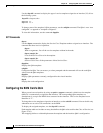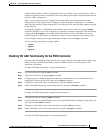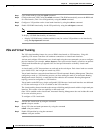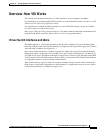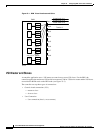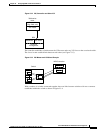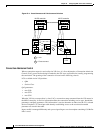
23-7
Cisco BPX 8600 Series Installation and Configuration
Release 9.3.10, Part Number 78-11603-01 Rev. D0, July 2001
Chapter 23 Configuring BXM Virtual Switch Interface
VSI Configuration Procedures
your permission to proceed. The warning message shows the number of Automatic Routing
Management (AR) connections that will be reprogrammed. After reprogramming the necessary
channels the LCN boundary is moved into the Automatic Routing Management space.
Note You can migrate Automatic Routing Management (AutoRoute) connections only if the
VPI range of the recipient VSI partition is adjacent to Automatic Routing Management.
To migrate Automatic Routing Management connections to a nonadjacent VSI partition
requires different VPIs within the recipient VPI boundary.
Assigning a Service Template to an Interface
The ATM Class of Service templates (or Service Class Template, SCT) provide a means of mapping a
set of extended parameters. These are generally platform specific, based on the set of standard ATM
parameters passed to the VSI slave in a BXM port interface during initial setup of the interface.
A set of service templates is stored in each BPX 8650 switch and downloaded to the service modules
(BXMs) as needed during initial configuration of the VSI interface when a trunk or line is enabled on
the BXM.
Each service template type has an associated Qbin. The Qbins provide the ability to manage bandwidth
by temporarily storing cells and then serving them out based on a number of factors, including
bandwidth availability and the relative priority of different Classes of Service.
When ATM cells arrive from the Edge LSR at the BXM port with one of four CoS labels, they receive
CoS handling based on that label. A table look-up is performed, and the cells are processed, based on
their connection classification. Based on its label, a cell receives the ATM differentiated service
associated with its template type and service type (for example, label cos2 bw), plus associated Qbin
characteristics and other associated ATM parameters.
A default service template is automatically assigned to a logical interface (VI) when you up the
interface by using the commands upport and uptrk. The corresponding Qbin template is then copied
into the card’s (BXM) data structure of that interface.
Following are some examples of assigning a default service template by using the commands upport
and uptrk:
• uptrk 1.1
• uptrk 1.1.1 (virtual trunk)
• upport 1.1
This default template has the identifier of 1. To change the service template from service template 1 to
another service template, use the cnfvsiif command.
To assign a selected service template to an interface (VI) use the cnfvsiif command, specifying the
template number. It has this syntax:
cnfvsiif <slot.port.vtrk> <tmplt_id>
For example:
cnfvsiif 1.1 2
cnfvsiif 1.1.1 2





